Leadership Skills For Brand Success
Given the accelerating pace of change, the greatest challenge that organizations face today is how to remain competitive and categorically relevant. It is not the change that is novel.
The velocity of that change is novel. Because of advances in information technology, a company can be launched and have a huge valuation three months later without the need for raw materials, manufacturing, or packaging.
LeadershipProducts and services that were cutting-edge just a year ago have now fallen out of favor. More patents are being filed with the United States Patent and Trademark Office than at any other time in history.
To succeed in this environment, organizations must be able to see what’s coming, seize and capitalize on opportunities, and dodge threats all at the same time—all with speed and assurance.
And therein lies the most important shift ahead skill for the twenty-first century: the ability to “see and seize” as the world spins faster.
Of course, the financial implications are significant: how do you maintain a competitive advantage without disrupting daily operations? You must deliver the figures. However, the consequences of failing to stay ahead of market dynamics are also social, cultural, environmental, and geopolitical.
Any brand that is not constantly seeing and seizing the moment, as well as constantly adjusting to changing contexts and conflicts, is at risk of becoming obsolete.
Yearly strategy development cycles are certainly well-intentioned, but they are still required to chart a general course. However, no matter how well you plan, you will almost certainly have to adjust your plan.
What distinguishes the Internet era is the rate at which categories undergo convulsive change.
The ability to see and seize an opportunity is the most important skill that a businessperson must have in a rapidly changing world. Some people see an opportunity but lack the insight or executional ability to capitalize on it.
Most people are transactional, meaning they can implement when directed but lack the vision to see the opportunities that change brings.
Who cares if you’re the greatest artist in the world if you don’t make something or, in manufacturing parlance,’ ship it?
Steve Jobs was the most insightful businessman of his generation. Given his ability to see and act on opportunities, he fundamentally changed five or six industries. From computers to printing to music to phones to entertainment to film, he was able to identify a market need that no one else saw. He possessed the ability to see and make it happen.
Consider the Mac, which was designed to be a computer for ordinary people. What is the realization?
Instead of forcing people to learn programming languages to communicate with computers, why not design a computer that is simple and intuitive to the average person?
In the case of music, he acknowledged that MP3s are superior formats for listening to and sharing music, but the distribution system relied heavily on piracy.
He saw the opportunity in figuring out a licensing and distribution mechanism that would allow everyone to buy into the idea of legal MP3s rather than the bits and bytes of technology.
He recognized this and, as a result, transformed the portable music category. Then there’s the iPhone. The majority of phone manufacturers viewed their product as a phone to which they added functionality incrementally.
Steve Jobs understood how to ‘think differently.’ To him, the opportunity was to create a very small computer with a wide range of capabilities, including the ability to make phone calls.”
Look for the most dynamic factor in a category, such as a significant shift in the consumer, the world, or culture, as this will allow the marketer to leapfrog and redefine the category. Distinguishing between opportunity and current reality requires mental fortitude.
Consider Uber. Someone at Uber saw an opportunity to reinvent the stale old business of taxis and car services by combining mobile communications and GPS technology.
They were able to rethink the taxi business using private vehicles and on-demand availability as a result of this insight. It’s a great example of someone looking at a business model—in this case, the taxi industry in New York City—and wondering how to improve it.
When looking at the market, business leaders should ask themselves, “If you knew your company was going to start over, how you would reinvent it?” What changes would you make? What is changing in society, and how does this affect your product and brand?
A few years ago, there was a catchphrase: ‘Dell or be Delled.’ It was another way of expressing Intel founder Andy Grove’s remark about the chip industry, “only the paranoid survive.”
Someone else will disrupt your category if you don’t do the impossible like Michael Dell. I prefer to think of it as an opportunity rather than paranoia.
Market leadership can be defined as simply determining what the majority of people want and then delivering it better than anyone else.
To challenge an entrenched leader, it is sometimes necessary to cause a fundamental shift in the consumer’s benefit hierarchy; to redefine what is most important to the consumer.
Indeed, the simplest way to do so is to take a step back and ask the big question: What is changing about the world, society, culture, technology, and attitudes, because it is in those changes that you have the opportunity to restructure how a consumer thinks about your category.
In our work, we’ve discovered that the ability to see and apply change is the defining skill set of a digital marketer. To stay ahead of the curve, you must be able to disrupt your industry.
The ability to see and apply change opportunistically is such a simple premise, but it is extremely difficult to achieve. There would be no need for business school courses in change management if it were simple.
Alvin Toffler, a writer and one of the first modern futurists, died. Toffler warned in his best-selling book Future Shock that the accelerating pace of technological change would make us all sick. He defined future shock as, the “shattering stress and disorientation that we instill in individuals by subjecting them to too much change in too short a period.” While his words were bleak and apocalyptic, he also stated, more constructively, that “you have to think about big things while you’re doing small things, so all the small things go in the right direction.” This, in our opinion, is a much more positive way of framing the situation.
And, more importantly, doing those things correctly and quickly. Those organizations whose leadership, culture, and financial resources enable them to make small shifts along the way, executed brilliantly as a result of their mission’s clarity of focus, will be the ones who succeed.
It is the most effective and efficient business model for a world in which the key challenge is the acceleration of change rather than the change itself. If you think this business model is only for the newly emerging, entrepreneurial types, think again. This see-and-seize business model is central to the first two companies discussed in this chapter.
They are both iconic organizations that have long been category leaders. Each was founded by an entrepreneur who excelled at recognizing and capitalizing on opportunities.
Each leader possessed an innovator’s DNA, which became part of the company’s cultural DNA. As a result, each organization has been able to maintain relevance over many years and numerous market fluctuations without the need for a seismic shift. Instead, they have the necessary flexibility to change course as needed.







